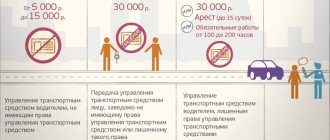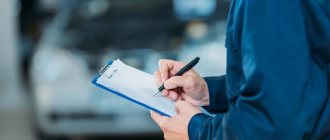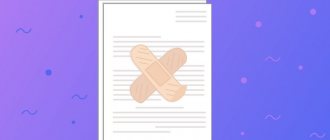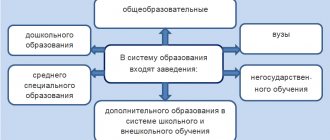Driving while intoxicated is a gross violation of the law. But what is repeated deprivation of license for drunkenness, and what does the driver face in this case? Let's figure it out. It is also worth noting that recently, aggravated misdemeanor may even result in criminal liability in 2021.
When a violation is considered repeated
When detaining a driver, the traffic police officer first identifies the person. Then, by contacting the duty department, it determines from the database whether the individual has a history of driving while intoxicated before and the punishment incurred for the act. According to Article 4.6 of the Code of Administrative Offenses of the Russian Federation, if a driver was previously punished for an unlawful act, then after paying the fine and from the date of expiration of the period of deprivation of the right to drive a vehicle, he is subject to the article for another year.
If during this period a motorist finds himself drunk and driving for the second time, then the measures taken against him are tightened and such a violation is classified as secondary.
The general algorithm for depriving control prerogative again is as follows:
- An authorized person forcibly removes the driver from driving a vehicle.
- In the presence of the violator, the inspector fills out a protocol on the administrative offense.
- Refers a person to medical care. examination in a special institution.
- If the examination establishes that the driver is drunk, then within 3 days from the moment the protocol is recorded, the case materials are sent to the magistrate’s court.
- The court notifies the individual of the place and time of the hearing by summons. Upon consideration of the case, a decision is made. If it is not positive for the car owner, then the latter undertakes to submit the driving license to the local traffic police department within three days.
Important! Refusal to conduct a medical examination does not prove the subject’s innocence. The provision regarding it is recorded in the protocol signed by the person. If the refusal occurred both during the first arrest and during the second, then this will only worsen the situation and will definitely lead to the elimination of driving preferences for some time.
What evidence can the traffic police provide?
It is impossible to initiate a case without evidence from the accused party. To bring the driver to justice, the inspector can substantiate the charge in two ways:
- Using a breathalyzer at the scene. The examination is carried out in the presence of two witnesses who can confirm the result.
- Using a blood test that will be carried out at a medical facility.
Regardless of the confirmation method, the traffic police officer is required to draw up a report.
What threatens the driver if he is caught driving drunk for the second time?
Repeated arrest for drunk driving can result in different consequences for the owner. The chosen preventive measure for the attacker is determined by the severity of the crime.
Punishment for repeated drunk driving – expert’s answer:
Therefore, the offender must be prepared to:
- prolongation of the time period for eliminating the prerogative of vehicle management;
- imposing a fine in a significantly increased amount;
- forced labor up to 480 hours (in specially designated institutions, work is carried out by the culprit for payment, part of which is transferred to the state treasury to eliminate the fine. The activities are monitored by an authorized correctional inspector, with whom you must report when entering a shift and completing the working day);
- forced correctional labor for a period of no more than 2 years (essentially the same forced labor with the deduction of funds to the state, but the individual comes to a designated place for work, and does not live in a specialized institution as in the first case);
- imprisonment for a period of two years or less. It is considered the most severe of the punishments used.
The above consequences can be applied in conjunction with:
- Deprivation of a driver's license.
- Prohibition of certain types of activities.
- Taboo to occupy a position (minibus taxi driver, for example).
Expert opinion
Artemyev Dmitry
Experience as a forensic expert in the field of automotive technical examination for more than 2 years, more than 3 years of work in the field of insurance disputes, appealing guilt in road accidents.
Ask a Question
The listed harsh measures of influence are recorded in article of the Criminal Code of the Russian Federation under number 264.1. Their use is prescribed exclusively in court if there are aggravating circumstances and the degree of danger to society is assessed.
Is it possible to challenge
Any decision of the traffic police inspector (protocol) can be challenged in court. Despite the fact that driving while intoxicated is considered a serious violation, there are cases where the case is resolved in favor of the motorist. The human factor can help the car owner: when conducting a medical examination or drawing up documents, a government representative could make serious mistakes.
If deficiencies made by the inspector are identified in a timely manner, the motorist will have a chance to win the proceedings.
You need to pay attention to the following deviations from the regulations:
- Insufficient number of witnesses when drawing up the act. It is possible to cancel a sanction in the complete absence of eyewitnesses or in the presence of only one of the two.
- In case of a secondary violation, the medical examination witnesses in the special institution were not nearby.
- The documents show the absence of a signature from one of the parties. Witnesses, the inspector and the motorist must sign.
- The witnesses involved signed blank forms.
If witnesses were identified but were absent during the procedure, the motorist needs to subpoena them. If the ignorance of eyewitnesses in the case materials is confirmed, the position of the accused vehicle owner will be strengthened.
If deviations from the regulations are discovered when filling out documents, the car owner should try to prove this to the judge. In this case, the decision may well be canceled. It is also important to check the documentation for the equipment used during the examination. If the breathalyzer does not meet certification requirements or has external damage, the driver must indicate these facts during the investigation.
Arbitrage practice
The court office has a large number of completed and ongoing cases involving sentencing for repeat drunk driving.
The table below illustrates a few examples:
| General essence of the matter | The assigned measure of influence |
| The appeal of Ivashnichenko S.S. was left unsatisfied. The Magistrate Court of the Gubkinsky District of the Belgorod Region made a decision on a number of acts of a citizen, namely: vehicle theft and driving while intoxicated in two episodes on January 7 and February 12, 2021 | Based on the totality of offenses, the subject was sentenced to a prison term in a high-security correctional facility of 2 years 4 months with the elimination of the preference for driving a car for 2 years 6 months |
| By the verdict of the Akhtynsky District Court of the Republic of Dagestan Zagitov A.N. found guilty of a car accident (the car overturned), and a secondary fact of being drunk while driving was established for a short time | Sentenced to a six-month restriction of freedom and a driving ban for 6 months |
| The Abakan Magistrate Court sentenced T.A. Korobeinikov. under Article 264.1 of the Criminal Code of the Russian Federation | Awarded 350 hours of compulsory labor with the elimination of the prerogative to engage in activities related to driving a car for a period of 2 years and 10 months |
Thus, based on the analysis of law enforcement practice, it becomes clear that alcohol while driving a car is subject to severe punishment and it increases in severity in the event of a relapse of the offender’s criminal behavior.
Responsibility under the Code of Administrative Offenses
According to the provisions of Article 12.8 of the code, several measures are provided for the violator to influence unlawful behavior. Basically, a person who violates the law faces the imposition of an obligation to pay a fine, and may also be subject to arrest.
If drunk driving is recorded primarily, then such a driver will face a fine of 30 thousand rubles and deprivation of driving license for a period of 1.5 to 2 years. A similar penalty is provided in case of transfer of control to an individual under the influence of alcohol.
If a person is caught driving drunk again and has previously been sentenced under the same article, then he will be subject to detention for 10 to 15 days or an administrative fine (if it is impossible to arrest - due to pregnancy, raising a young child alone).
Expert opinion
Artemyev Dmitry
Experience as a forensic expert in the field of automotive technical examination for more than 2 years, more than 3 years of work in the field of insurance disputes, appealing guilt in road accidents.
Ask a Question
Did you know? These measures are applied in the absence of negative consequences for society, that is, a criminal offense (causing harm to health, material damage for car repairs to the injured subject). In such circumstances, criminal liability comes into play.
How many ppm is acceptable?
Current legislation has clear rules regarding how much alcohol you can drink while driving, and when it is better to sit in the passenger seat. If the indicator does not exceed the permissible level of the norm, the person will not be punished. Measurements are taken per liter of exhaled air. The norm is 0.16 milligrams of alcohol. This is 0.3 ppm.
To make it easier to navigate the amount of drink, an adult man weighing 80 kg or more should drink half a liter of 5% beer and wait 4.5 hours. But this is an average, since different people’s bodies can eliminate alcohol faster or slower. Therefore, it matters not only how much alcohol is in the body, but also how it is eliminated. If the permissible limit for ppm of alcohol is even slightly violated, problems cannot be avoided.
Fines
In addition to the unpleasant deprivation of the right to drive a vehicle, the violator will also face financial liability. Considering the level of Russian salaries and the time allowed for repaying debts following an offense, the fines imposed can greatly affect the financial condition of the family budget or a single person.
The final amount due for deduction to the state budget is influenced by:
- the very fact that the driver is drunk (if the results of an examination in a medical institution reveal a level of 0.16 ppm, then this is enough to recognize the person as under the influence of alcohol);
- repetition of the violation (in case of relapse, the amount of the penalty increases several times);
- the degree of damage caused to society (presence of injured, dead, creation of an emergency situation on the road).
Thus, when driving while drunk, administrative and criminal measures are applied.
Regarding the fine specifically:
- In the absence of a car accident and no injured persons, in case of a primary violation, the driver will have to pay 30 thousand.
- The same amount is expected to be paid when transferring the driving of a car to a drunk person.
- If you are caught a second time, the monetary penalty increases significantly – from 200 to 300 thousand.
Interesting! When assigning a specific amount, the person’s income for 1-2 years is taken into account.
What happens if the driver is drunk at the wheel for the third time?
The sanctions applied to him do not always stop the motorist, and he commits an offense again. The current Russian legislation does not separately consider the situation of the third deprivation of a certificate. However, the situation is worth considering in more detail.
Art. 32.7 of the Code of Administrative Offenses fixed the procedure for confiscating a driver’s special document during the period when the previous punishment has not yet expired. In this case, for drinking alcohol while driving. According to paragraph 3 of this article, the course of the new period of deprivation starts from the next day after the end of the previous one.
Important! It turns out that the general period of prohibition of driving a vehicle is not displayed, but the entire period of punishment occurs separately and is summed up.
For example, Ivanov has already been sentenced to a driving ban twice in four years. The first time for 1.5 years, the second time for 2. Thus, the total period will be 3.5 years. And this can continue indefinitely, reaching unrealistic periods of 15-20 years.
Controversial situations during detention
If traffic police officers have the slightest suspicion that the driver is intoxicated, the car owner will be required to undergo a medical examination. If there is obvious abuse of alcoholic beverages, it will not be possible to avoid responsibility. If, after conducting a breathalyzer test, the permissible norm of ppm (0.16 mg/l) during exhalation is exceeded, government officials will draw up an appropriate protocol.
Situations occur when an on-site examination produces an overestimated result, although the driver is fully confident that he did not drink alcoholic beverages. In some situations, this is considered a variation of the norm, since some foods consumed contain substances that increase ppm.
The driver should not consume citrus fruits, chocolates, kefir, kvass and some other products before the trip. However, the substances contained in the listed edibles quickly disappear. The motorist has every right to take the breathalyzer test again after 10 minutes. If the driver is in adequate condition and does not show signs of intoxication, the employees will not be against this requirement.
If the re-examination nevertheless fails with an overestimation of the norm by 1-2 ppm, the car owner must insist on a trip to the medical center for a blood test. This procedure will give a more accurate result. The permissible ethyl alcohol content will be 0.35 ppm.
If the driver simply does not agree with the result of the breathalyzer, but refuses a medical examination, he will be held accountable. Any attempt to avoid confirmation of a sober state will be qualified as confirmation of intoxication.
After the decision is issued, the motorist can count on the cancellation of the penalty only if the documents are filled out incorrectly. Any error or omission may be grounds for cancellation of the decision. Erroneously drawn up documents are not subject to consideration in court.
Do I need to retake the exam?
You shouldn’t even think about early return of your driver’s license in the event of a second deprivation under the article for drunkenness. Although such a prerogative is provided for other violations. So, 30 days before the end of the punishment, it is necessary to collect a package of documentation and send it to the traffic police department that carried out the seizure.
It is allowed to send paper support in the following ways:
- by visiting the branch in person;
- online on the official website of the inspection;
- using the government services portal;
- by contacting the nearest MFC.
After submitting the documentation, the motorist will be notified of the time and place to receive the certificate. But not everything is as simple as it seems at first glance.
Did you know? It is possible to obtain a document only after successfully passing a theoretical exam, that is, on knowledge of the rules of the road. You are allowed to take the test both at the department and at a specialized driving school.
According to the comments of legislators, the need to retake the theory is caused by regular transformations in traffic rules, which the driver deprived of his license might not have known about.
What are the expected criminal penalties for driving while intoxicated?
You need to prepare the following documents:
- Applicant's passport.
- Photos by size.
- Medical report on health status.
- Evidence of payment of fines (now it is not necessary to bring payment papers, since the database contains information on the individual’s debts and their liquidation. But it is recommended to save such receipts).
- Completed application on paper or electronic media.
- Permission from doctors to administer (undergoing a narcologist in this situation).
New rules in 2021
Continuing the 2021 trend of toughening penalties for driving inappropriately this year, the following points can be noted:
- the tester checks for the presence of intoxication only after drawing up a protocol on removal from driving the vehicle;
- in 2021, the driver has the right to request an examination at a specialized institution where he is delivered by an inspector;
- if the alcohol content is confirmed, the car is evacuated to the impound lot (this can be avoided if there is a person in direct access who has a power of attorney for the car and a license);
- a violation is the fact of driving while intoxicated, but not drinking alcoholic beverages in the cabin;
- the license does not have the right to be confiscated on the spot (according to the new rules, the driver is obliged to hand over the card within three days after the incident);
- refusal to undergo an examination is regarded as an automatic admission of guilt and entails negative consequences.
Nuances
The driver needs to understand that alcohol intoxication clearly does not contribute to strengthening reaction and attention. If large volumes of alcoholic beverages have been consumed, then coordination of movement is additionally impaired, and the ability to adequately think and perceive reality is lost.
Therefore, the imposition of punishment in the form of a fine and deprivation of rights for drunk driving is recognized as a completely adequate measure, since such driving automatically poses a potential danger to the lives of both the driver and other road users.
Final provisions
From all of the above it follows:
- Every year, the measures taken against drunken traffic offenders are changing towards becoming more stringent.
- If you are deprived of it 2 times, then the period of the ban is cumulative and does not flow simultaneously.
- In addition to administrative liability, criminal measures are applied.
- Additional punishments are applied to the main type of punishment.
- Refusal from honey. examination is recognized as the fault of the subject (since it is extremely difficult to prove the validity of such an action).
- As judicial practice shows, persistent offenders receive the maximum permissible measures.
- There is no provision for interruption or early return of the temporary residence permit in the presence of the commented type of act.
- It is allowed to receive a driver's card after seizure only upon successful completion of the theory knowledge test.
- Without eliminating all debts, it will not be possible to issue a permit.
- You need to pick up your license and submit documents to the department where the violation of order was recorded and your license was surrendered.
- After the expiration of the period of deprivation of driving privileges, the offending individual is subject to the provisions of the article for another 12 months. If you find yourself driving drunk again during this period, severe sanctions will follow.
From the video you will learn how to return your rights after their deprivation:
And although the law does not provide for life imprisonment, in fact, in law enforcement practice, the time limit adds up and can reach a long period.
How to appeal results
The legal limit for alcohol while driving does not mean that you can drink every time you get behind the wheel. The driver must be crystal sober, but even this sometimes does not help avoid fines. If you have been issued a fine, you can appeal the result, especially if there is evidence that the ppm in the body meets the norm.
Incorrect protocol. You will have to prove this if the case is already in court. In this case, you can protect yourself by using one of the following facts:
- Video recording of what was happening was not attached to the protocol;
- The testimony of witnesses was not attached;
- The document distorts the facts;
- The last name, first name, date or place are entered incorrectly.
The second reason is unacceptable testing inaccuracies. To see the results, the driver must exhale into the breathalyzer, where a special tube (mouthpiece) is attached. It should be new for every person. The examiner must open the sealed tube immediately before the procedure. Traces of alcohol from another person being tested may remain on the old instrument, which will make it difficult to know how much the permissible level is exceeded. If the inspector refuses to change the mouthpiece, this fact must be indicated in the protocol, since it may show a violation, even if the driver is sober.
You don’t have to sign the protocol if the data in the printout is not true (not today’s date, the readings are too high). The driver may also ask to be shown documents for a breathalyzer. They confirm that the device is working and registered. Drivers can be tested again in a private laboratory, donating blood there to confirm or refute the device's readings and defend their right to get into the car and drive.









